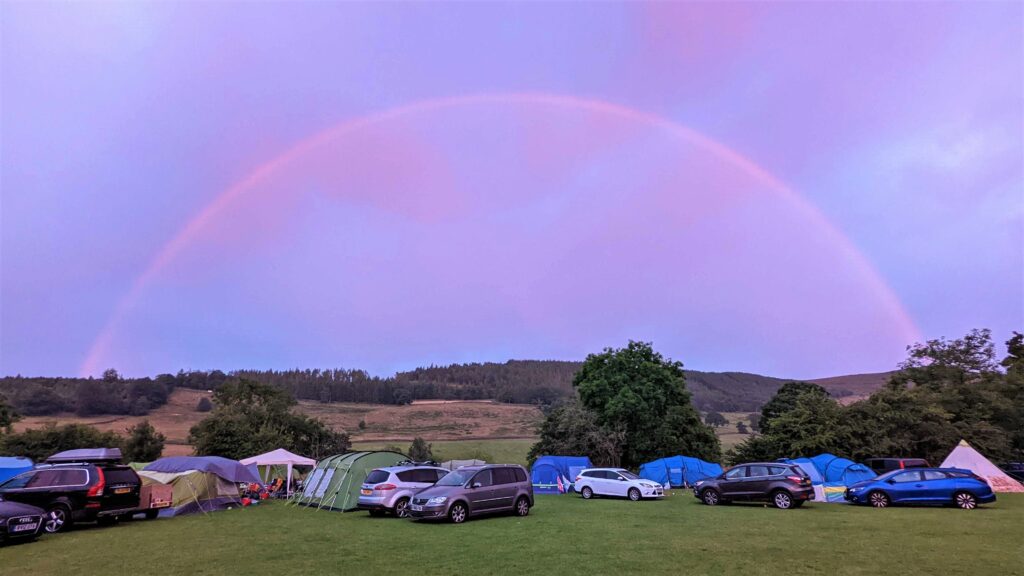
On a camping weekend, being woken at 4:15am by the sounds of rain (and immediately needing the loo) isn’t the best start to the day. But when this happened on the morning of a recent trip I was rewarded with the amazing sight of the dawn sun combining with the drizzle to produce a stunning (and very rare) pink rainbow.
While a very picturesque phenomena in of itself, things get even more interesting when it is noted that in a regular rainbow there is no pink at all. Let’s double check using the internationally recognised method:
- Richard
- Of
- York
- Gave
- Battle
- In
- Vain
Yep, looks correct, no Pink.
This is because there is no wavelength on the visible spectrum that corresponds to pink light, and rainbows show only monochromatic colours, which have a single dominant wavelength. When we perceive pink in other contexts we are actually seeing a mixture of red and blue light.
At both dawn and dusk sunlight travels at a lower angle through a thicker portion of the atmosphere which only allows the longer red wavelengths from the rainbow’s colour spectrum to be refracted.
Here’s the full picture… not a bad start to the day:
